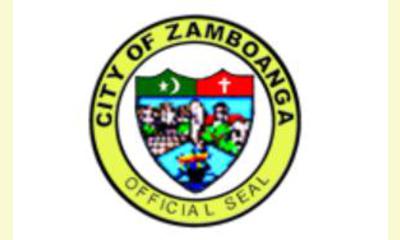|
|
400 student gov't. officers get primed on good governance
un article par Albert F. Arcilla, Zamboanga Today Online
Some 400 student government officers coming from 32 local national high schools had a day-long skills enhancing encounter towards the building of the culture of peace last Saturday, March 17 at Claret Gymnasium, Zamboanga City.

click on photo to enlarge
The student leaders came from as far as rural schools of Tictapul located at the eastern part of the city and Limpapa, the last village of Zamboanga in the west coast, along with their advisers to convene the student leadership training whose theme and agenda was “Peace, Leadership and Governance: Key to Student Initiatives for Societal Change” The pre-summer event was sponsored by Peace Advocates Zamboanga (PAZ) and the Interreligious Solidarity Movement for Peace (IRSMP) in partnership with the Department of Education and Task Force Zamboanga.
Fr. Mauricio Ulep, CMF, Director of the Claret school of Zamboanga, in seeing the huge number of student leaders gathering for the cause of promoting just peace in their respective schools, underscored the importance of taking the student’s responsibility towards peace promotion.
“I believe that this is our task in building peace initiatives. We come together in advocating for peace and let us bridge the gap between us,” Father Ulep said during the opening program of the youth leadership training. The youth summit is an offshoot of last year’s inter-school peace camp, whose participants were composed of different supreme student government officers in the secondary level. PAZ and IRSMP see to the need for the continuing enhancement of the student leadership potentials, abilities and skills in understanding and realizing the culture of peace in their respective schools and communities.
PAZ President, Fr. Angel Calvo in his opening ceremony message said: “Student leadership is the key element in our dreams of living in peace.” He challenged the young leaders to pursue their dreams and visions of peace and affirmed the belief that they are capable to achieve them. In the training proper, the student leaders were briefed on peace, leadership and governance, which were presented by various panelists. As supreme government officers, the training taught them how to discharge their duties and responsibilities according the principles of good governance, with an eye towards building peace within their immediate circles. . .
In a separate session, the student leaders formed their groupings for the workshop, in which they mapped their strategies to achieve the so-called six paths to peace. The six paths to peace are cultivating inner peace, living with justice and compassion, living with harmony with the earth, dismantling the culture of war, promoting human rights and responsibilities and promoting inter-cultural respect, reconciliation and solidarity.
These will allow the student leaders to concretely draw up doable programs in the schools and communities. PAZ and DepEd have been working hand in hand in the promotion of the culture of peace in the different schools in the city.
The Department of Education had issued earlier the Executive Order 570 which mandated the institutionalizing of peace education in basic education curriculum and teacher education.
|








|
DISCUSSION
Question(s) liée(s) à cet article:
How can youth be engaged in democratic transitions?,
* * * * *
Commentaire le plus récent:
The youth in the article Democratic Transitions and the Role of Youth: A Debate are good examples:
Hilton Nyamukapa has recently taken part on a conference on Social Media and Youth Participation located in Amman, Jordan. Fatma Wakil has been actively involved within the Afghan community in the Netherlands as the chairperson of the KEIHAN, Afghan Youth Foundation. Yassine Boussaid is interested in connecting local issues to international organisations and improving the quality of life of the Moroccan and Turkish suburbs of Amsterdam.
Hilton concluded that it is necessary to the positive engagement and subscription of youth to democracy. The youth are often manipulated for a better picture in the media. Hilton cited the memorable injunction of the former President of USA, John F. Kennedy: "Ask not what your country can do for you--ask what you can do for your country." Hilton highlighted the urge to involve youth in the whole democratic process and give them the opportunity to participate in public life.

|
|









